Aeroacoustics and Vibroacoustics
Research activities of the Aeroacoustics and Vibroacoustics Group focus on the experimental and computational modeling of flow-acoustic and vibroacoustic phenomena; particular emphasis is directed towards improving the fundamental understanding of underlying physical processes involving the coupling between flow instabilities, turbulence, structural vibrations, absorber surfaces, and sound emission. Our research approach combines classical theoretical analysis tools into validated workflows (including acoustic analogies and stochastic models), and numerical models (such as large-eddy simulations (LES), hybrid aeroacoustic predictions, or direct numerical simulation (DNS) of the flow and sound field). Computational models are the basis for a first highly-resolved view into the physical fields for understanding, improving the development, analysis, and validation of both theory, measurement devices, applications, and experimental facilities. Current aims include:
• By computational and experimental workflow development in the context of aeroacoustics and vibroacoustics, we provide validated workflows for technical and medical applications.
• By understanding aeroacoustically-generated sounds, transmission, radiation, we successfully mitigate sound of complex mechanical systems and environments at the source. This reduction potential helps our partners to leverage efficiency further towards the noise limits of products.
• By sound source analysis, we visualized and analyzed the sound sources both virtually and experimentally. The result is a 3D sound source distribution based on simulation or microphone array measurements.
• By high-order, high-fidelity numerical techniques, physics-based machine learning for identifying system dynamics, and low-order surrogate modeling, we aim for a full understanding of the physical principles with adequate investment of resources.
• By training dataset generation, we develop and measure benchmarking datasets for relevant applications.
• By planning of active and passive sound mitigation strategies and accompanying absorber prediction models, we support the reduction of stressfull sound emissions in urban and rural environments.
• By characterization of measurement signals, non-ideal facility-induced impact (systematic deviation or event-based fault detection) on the experimental data generation is identified, reported, assessed, and compensated by simulation and data-driven prediction models (e.g. improve the signal-to-noise ratio of pressure sensors in flow regions).
News and upcoming events
DEGA-Akademie-Kurs "Strömungsakustik 1 - Grundlagen, Auslegungen und Anwendungen" (25.-26.09.2023)
The course is devoted to employees of industrial companies and consulting offices who still need to gain intensive experience with flow acoustics or aeroacoustics and want to expand their knowledge in this field. Registration and more information are found here.
DEGA-Akademie-Kurs "Strömungsakustik 2 - Theorie, numerische Verfahren und Anwendungen" (27.-28.09.2023)
The course is devoted to employees of industrial companies and consulting firms who already have experience with flow acoustics or aeroacoustics and want to deepen their knowledge in this field. Registration and more information are found here.
Forum Acusticum 2023
The Aeroacoustics and Vibroacoustics group organizes the session theme Computational Acoustics at the Forum Acusticum in Turin. Besides, it is chairing the structured sessions on Aeroacoustics and computational Aeroacoustics.
ERCOFTAC Course Computational Aeroacoustics IV
The course is devoted PhD students, postDocs and Employees of industrial companies and consulting firms want to gain a deep understanding on Computational Aeroacoustics. It serves valuable knowledge for people having already experience with flow acoustics or aeroacoustics and want to deepen their knowledge in this field further. Registration and more information is found here.
View more news...
Team and alumni
Group lead
Team
Alumni
Clemens Freidhager
Lucas Eckert
Reference projects
Our focus is physical understanding, scalability, and flexibility. Within fundamental and industrial research projects, we developed efficient virtual acoustic prototyping and designing tools for several application areas:
• Transportation (automotive, aviation, railways, underground)
• Technical applications (vehicle noise, noise vibration and harshness, heating-ventilation-air conditioning systems, turbocharger, fuel cell, fans, silencer, valves, wearables, smartphones, communication)
• Medical applications (prostheses, human phonation, hearing aid)
Medical application: Understanding human phonation
Within a series of projects, we yield the current understanding of the human phonation process by detailed experimental studies and validated numerical models such as simVoice. The overall objective is to model the Fluid-Structure-Acoustic-Interaction with vocal fold contact within the next years. More information on a selected example project can be found here.
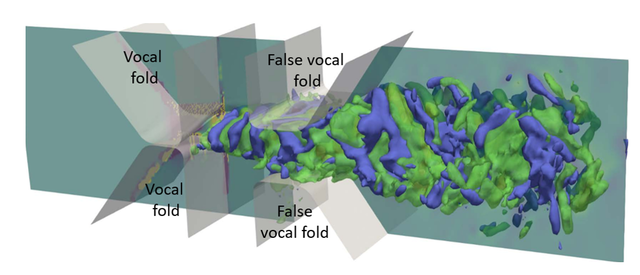
Thermal management cooling fans and heat pump technology: sound source localization and predictions of sound emission
Achievement of the last years is the derivation of the scalar perturbation equation that has been applied to various applications like the sound field simulation of HVAC systems including low-pressure axial fans. By appropriate modeling of the acoustic excitation, we use adaptable workflows and efficient methods, which reduce the calculation effort considerably. Information on another example project dealing with compressor noise predictions can be found here.
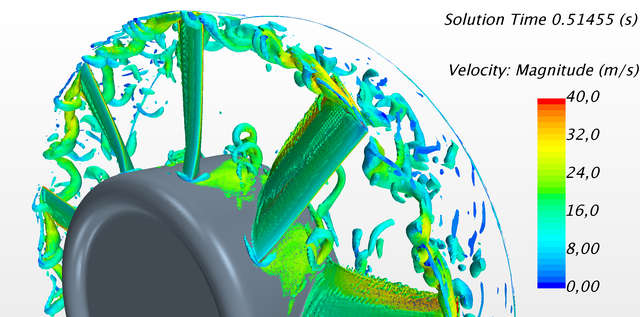
Automotive and aviation industry: sound transmission and sound absorber design for pipe structures
The importance of acoustic comfort in electric vehicles is strongly increasing. Due to the fact that main noise sources such as the combustion engine is no longer present, the focus for the acoustic comfort concentrates on acoustic sources, which have been masked by the combustion engine, as well as new acoustic sources arising due to the high integration of necessary components. The goal of this research project is the development of a simulation environment, which can precisely compute the sound mechanism in flow-guided pipes and its radiation. More information on a selected example project can be found here.
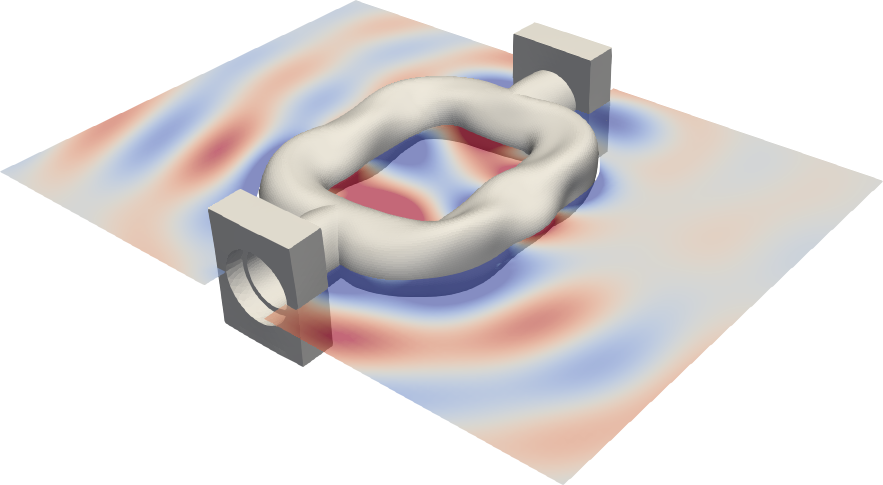
Smooth certification: experimental detection and computational identification of sound-generation hotspots in the product development phase
Modern knee prostheses must meet a wide range of requirements to provide the user with the best possible support in everyday life. The application profile of users requires functionality, while little noise is emitted. Under certain circumstances, however, considerable noise can be generated, which is perceived as a stress factor by the wearer and is perceived as unpleasant by the surrounding people. The core idea is to develop a computer-aided simulation methodology that, once integrated into the R&D lifecycle, can be used proactively and at an early stage in product development to avoid noise sources (acoustic hotspots). More information on a selected example project can be found here.
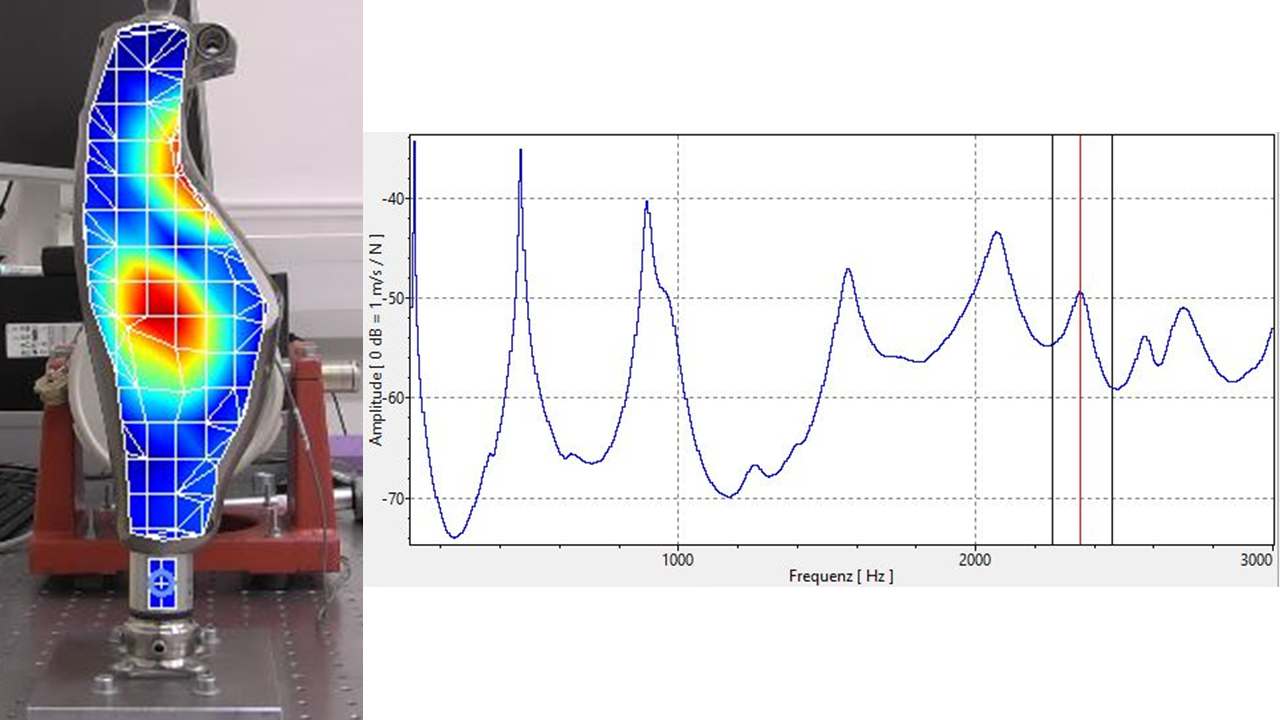
Communication: flow field visualization around the human head for better communication in harsh environments
In everyday communications smartphone, wearables, and hearing aids are omnipresent and often used outdoors under windy conditions. Until now, limited understanding has been gathered on the driving mechanisms on the wind-noise perceived by the communicating people. Recently, we simulated the wind-noise loading under different conditions and applications.
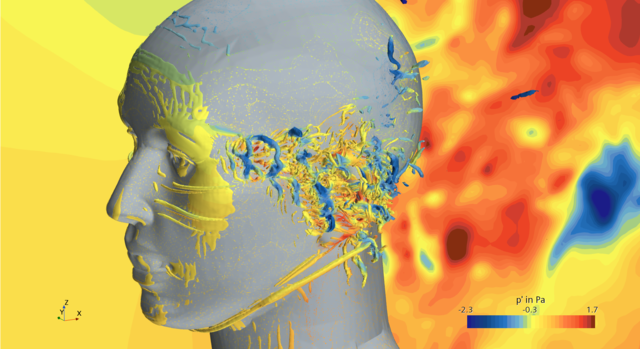
Datasets and benchmark cases
CYLinCF-01, Circular cylinder in a cross flow, Mach Number 0.03 and Reynolds Number 200
This aeroacoustic workflow (pipeline) generates a flow and acoustic dataset for studying flow-induced sound in the context of a cylinder in cross flow. The numerical simulations are performed using OpenFOAM for the flow and openCFS for acoustics using the perturbed convective wave equation (PCWE). The simulation workflow is presented in all its details for verification.
Fan-01, EAA Benchmark for a low-pressure axial fan
The case consists of a generic axial fan for industrial applications. Provided measurement data include instationary pressure probes in the rotor's tip gap, distributions of velocity and turbulent kinetic energy gained by laser Doppler anemometry, as well as acoustic results gained by microphones and beamforming.
More datasets, you find in the dataset collection of the EAA organized by Stefan Schoder.
Software projects and tools
Considering product development, we provide a scalable, flexible, efficient, and validated simulation sequences that can boost your R&D processes. These sequences include aeroacoustic measurement methods, a high-end finite element framework "openCFS" with a python interface “pyCFS” and data processing framework in Julia.
Facilities and infrastructure
- Measurement devices
- PSV 500 Scanning Vibrometer
- Aeroacoustic testrig for confined flows
- Computational resources
- Institute Server (32 Cores, 768 GB RAM)
- Vienna Scientific Cluster
Contact us
Ass.Prof. Dr. Stefan Schoder
Aeroacoustics and Vibroacoustics Group (AVG)
Institute for Fundamentals and Theory in Electrical Engineering (IGTE)
Graz University of Technology
Inffeldgasse 16
A-8010 Graz, Austria
Mobil: +43 664 60 873 7763
Email: stefan.schoder@tugraz.at
Participation in Scientific Committee
ÖGA Fachausschussleitung Computational Acoustics
DEGA Fachausschussleitung Strömungsakustik
EAA Technical Committee lead Computational Acoustics (more information)
EAA Benchmark Datasets Editorial Board (more information)
ERCOFTAC SIG 39 Aeroacoustics Steering Committee (more information)

